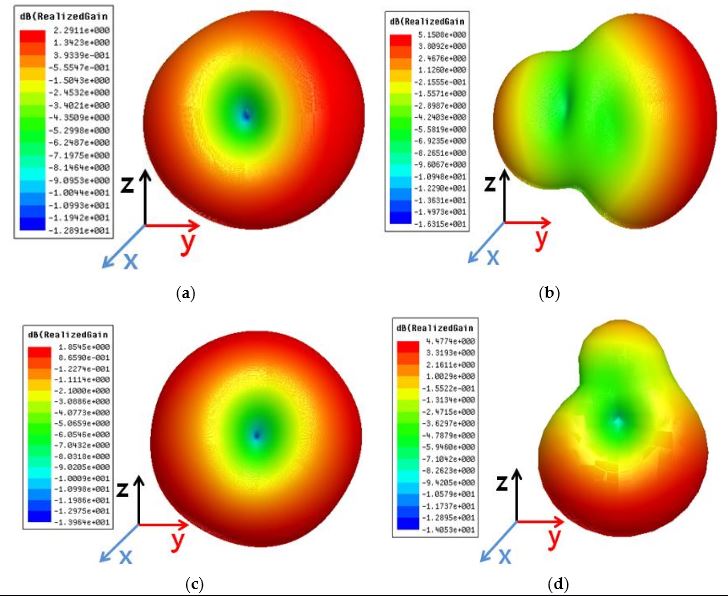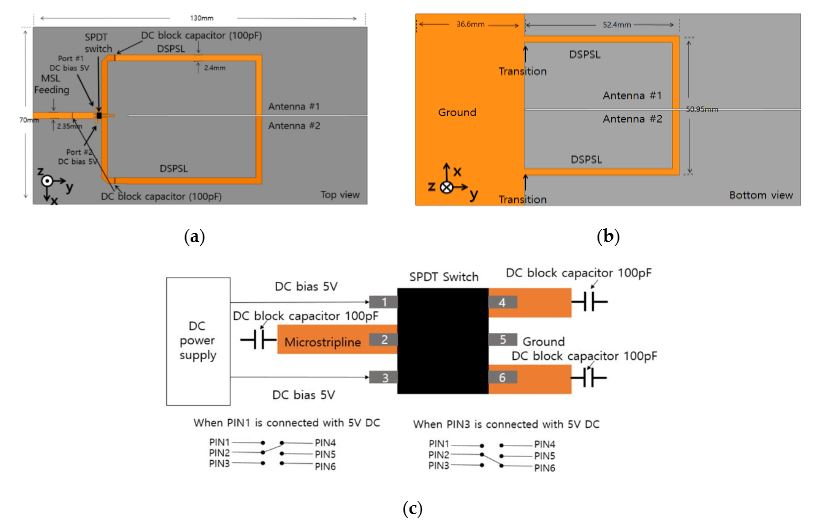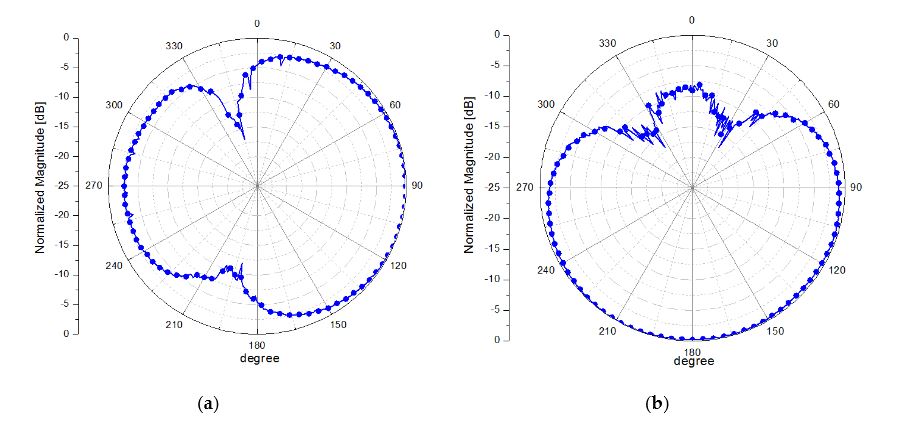ABSTRACT
In this paper, we propose a paper-based pattern switchable antenna system using inkjet-printing technology for bi-direction sensor applications. The proposed antenna system is composed of two directional bow-tie antennas and a switching network. The switching network consists of a single-pole-double-throw (SPDT) switch and a balun element.
A double-sided parallel-strip line (DSPSL) is employed to convert the unbalanced microstrip mode to the balanced strip mode. Two directional bow-tie antennas have different radiation patterns because of the different orientation of the reflectors and antennas. It is demonstrated from electromagnetic (EM) simulation and measurement that the radiation patterns of the proposed antenna are successfully switched by the SPDT switch.
ANTENNA SYSTEM DESIGN

Figure 3. Simulated 3D radiation patterns when (a) first antenna is on without reflector, (b) first antenna is on with reflector
Figure 3a,b show the simulated 3D radiation patterns of the antenna #1 without and with the reflector, respectively. Due to the reflector, the peak gain is increased from 1.85 dBi to 4.47 dBi. Figure 3c,d show the simulated 3D radiation patterns of the antenna #2 without and with the reflector, respectively. Due to the reflector, the peak gain is increased from 2.29 dBi to 5.15 dBi.

Figure 4. Layout of switching network; (a) top view and (b) bottom view (c) single-pole-double-throw (SPDT) switch with bias network
The geometrical parameters of the switching network which consists of the DSPSL balun and SPDT switch are indicated in Figure 4. The 50-ohm microstrip line width is 2.35 mm, and the DSPSL line width is 2.4 mm. When the height of the substrate is the same, the DSPSL has a higher characteristic impedance than the microstrip line. Therefore, the DSPSL line width is greater than the microstrip line width.
FABRICATION AND MEASUREMENTS

Figure 8. Measured E-plane radiation patterns of fabricated antenna when (a) first antenna is on and (b) second antenna is on
The radiation pattern of the proposed antenna system is measured in an anechoic chamber. Figure 8 shows the normalized results of the radiation patterns obtained by the measurement when antenna #1 is on and antenna #2 is off, and vice versa. It is successfully demonstrated that the maximum radiation direction can be switched. The measured peak gains are 3.92 dBi and 4.72 dBi when antenna #1 and antenna #2 are selected, respectively.
CONCLUSIONS
In this paper, we proposed a paper-based pattern switchable antenna using inkjet technology. Two directional bow-tie antennas with different radiation patterns are inkjet-printed on paper. In both radiation modes, the 10 dB impedance bandwidth is in the range 1.66–2.2 GHz. When antenna #1 and antenna #2 are selected, the peak gains are 3.96 and 4.72 dBi, respectively. It is numerically and experimentally demonstrated that two different radiation patterns are successfully switched by using the SPDT switch.
Therefore, the proposed pattern switchable antenna can sense the objects at different location. In the present prototype, the switching network is fabricated on the PCB and the antennas are inkjet-printed on paper. This hybrid structure requires mechanical assembly processes. As future works, all-inkjet-printed prototype will be built by inkjet-printing the switching network on paper.
Source: Chung-Ang University
Authors: Seung-Hyun Eom | Yunsik Seo | Sungjoon Lim